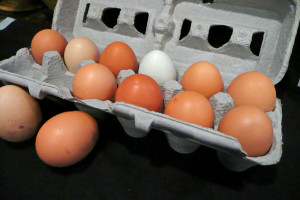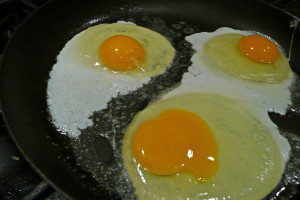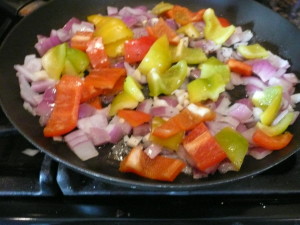 A common misconception about eggs is that you need a rooster in order for hens to lay eggs. Another misconception– roosters lay eggs (true question, I have been asked that!) A few years ago, we packed up our bags and moved from the city to a 185-acre farm in VT. In the shadow of Elephant Mountain, we built barns, laid fences, dug a pond and built a chicken coop. Since treading lightly into a new venture has never been our strong point, that first spring we ordered 50 layers, 25 roasters and 50 turkeys. However, the turkeys are a story for another day.
A common misconception about eggs is that you need a rooster in order for hens to lay eggs. Another misconception– roosters lay eggs (true question, I have been asked that!) A few years ago, we packed up our bags and moved from the city to a 185-acre farm in VT. In the shadow of Elephant Mountain, we built barns, laid fences, dug a pond and built a chicken coop. Since treading lightly into a new venture has never been our strong point, that first spring we ordered 50 layers, 25 roasters and 50 turkeys. However, the turkeys are a story for another day.
On a warm day in spring, our local Agway called to say the chicks were in. Down I went to pick up my box since the chicks come packed nicely into a box. I brought the cheeping box home and put the little yellow balls of fluff into a big trough with a heating lamp, water and food. When the layers were large enough, they went into the hen house followed by a donated rooster. Roosters, it turns out, are easy to get and usually free. Why you may ask? Because roosters are NASTY. They cock a doodle do at four or five am, sometimes even earlier and they chase and peck at you when you collect the eggs. We were all pretty much intimated by our rooster. But, roosters do play an important role if you want chicks. The first time I heard a little peep and saw a little yellow fur ball that hatched from an egg was exciting. We kept the rooster until he moved on to a better place with a little help from a local fox.
After that, I learned to collect eggs when the hens were otherwise engaged in foraging. We collected two dozen eggs some days. Since I had ordered arancunas as well as the common varieties of chickens, our eggs were white, brown, blue and green. They were so pretty to look at. The best part is that unless you raise your own chickens, you have no idea how orangey the yolk is and how they taste like eggs should taste.
Our chickens were free range in that they had a large enclosed yard to forage in and access to the chicken house whenever. I’m sure you have seen barnyards where chickens are running around scratching for food but the possibility of them being killed by animals is greater and then you still have to hunt for the eggs. After gathering the eggs, give a quick rinse if they are dirty and then put into the fridge. There is some disagreement as to how to store fresh eggs–countertop or fridge–I always put them in the fridge.
Since we no longer farm, I buy eggs from stands around my home. They are from free-range chickens and fresh. Look at this picture and tell me which is the store egg and which is fresh (hint: the broken yolk is….the store egg and I did not break the yolk!)
Now I love to cook eggs, I love the smell of cooking eggs. Sadly, I can’t bring myself to eat most cooked eggs. To clarify, I can’t eat eggs that aren’t separated, beaten well or cooked dry. However, I love cooking them—go figure. Luckily, my husband will eat eggs in any form. His favorite are eggs that are fried over easy or poached. There are a couple of ways I’ve found to fry eggs. They can be cooked on one side and flipped over or you can do what my mother in law used to do and fry the egg without turning it over then baste with whatever fat you are using to fry them in (butter or bacon fat), cover them for a little bit and serve.
One of my favorite uses for eggs is a quiche or frittata. I’m making a frittata for dinner tonight. A frittata is a great way to use up leftover meats, veggies and even pasta. It can be served warm or hot and is great for breakfast, brunch, lunch or dinner with a salad. This is my basic recipe; add whatever you have in the fridge.

